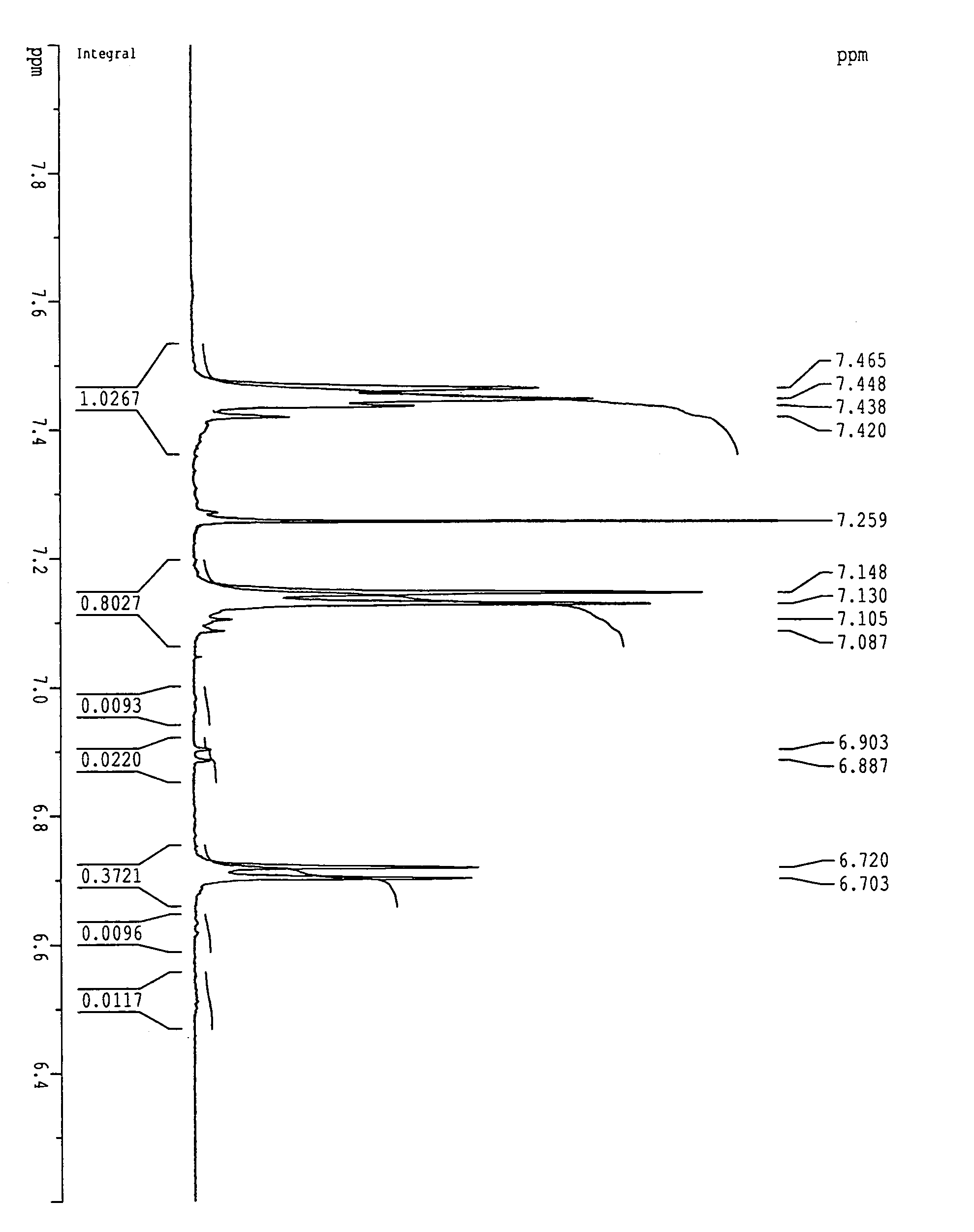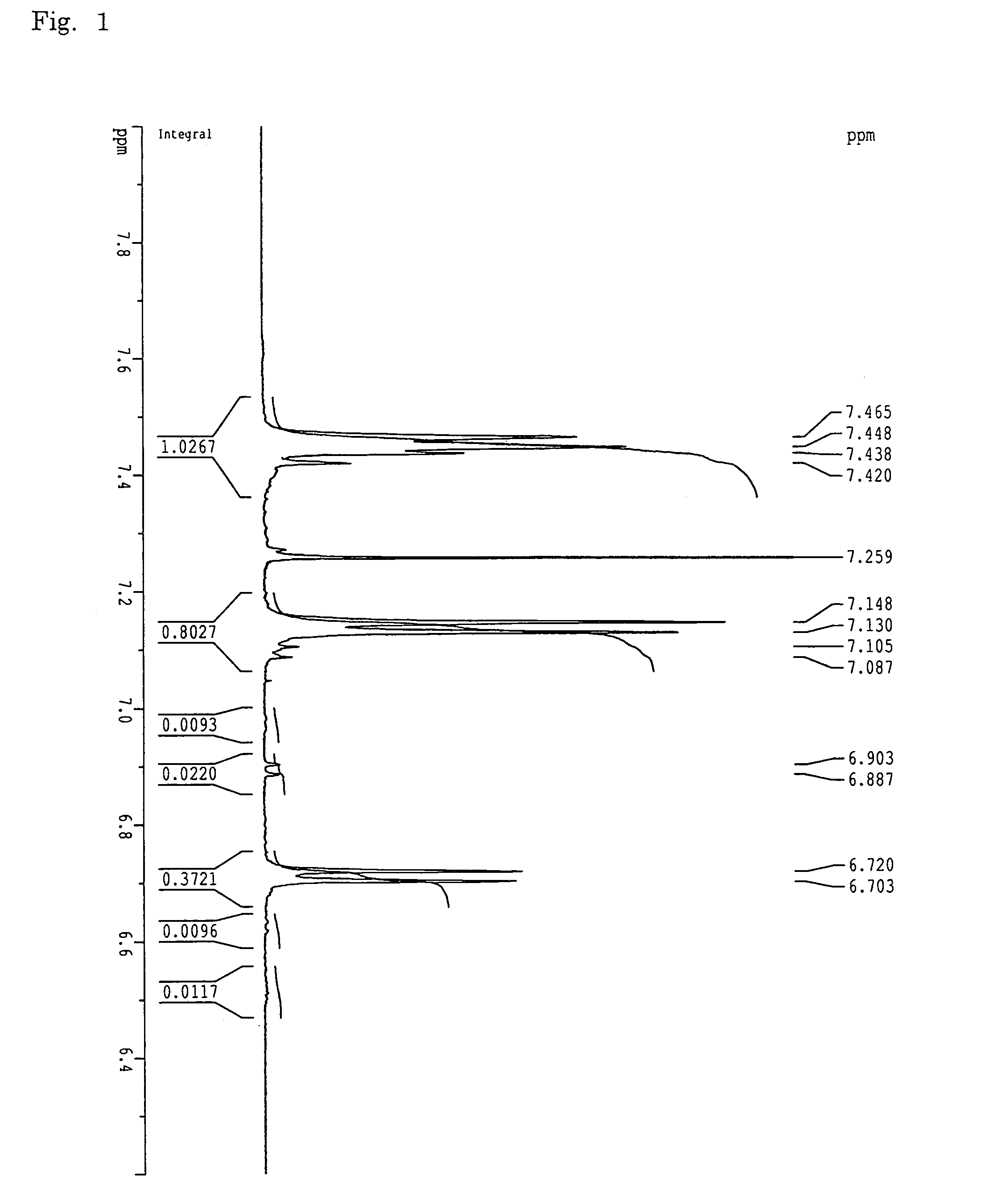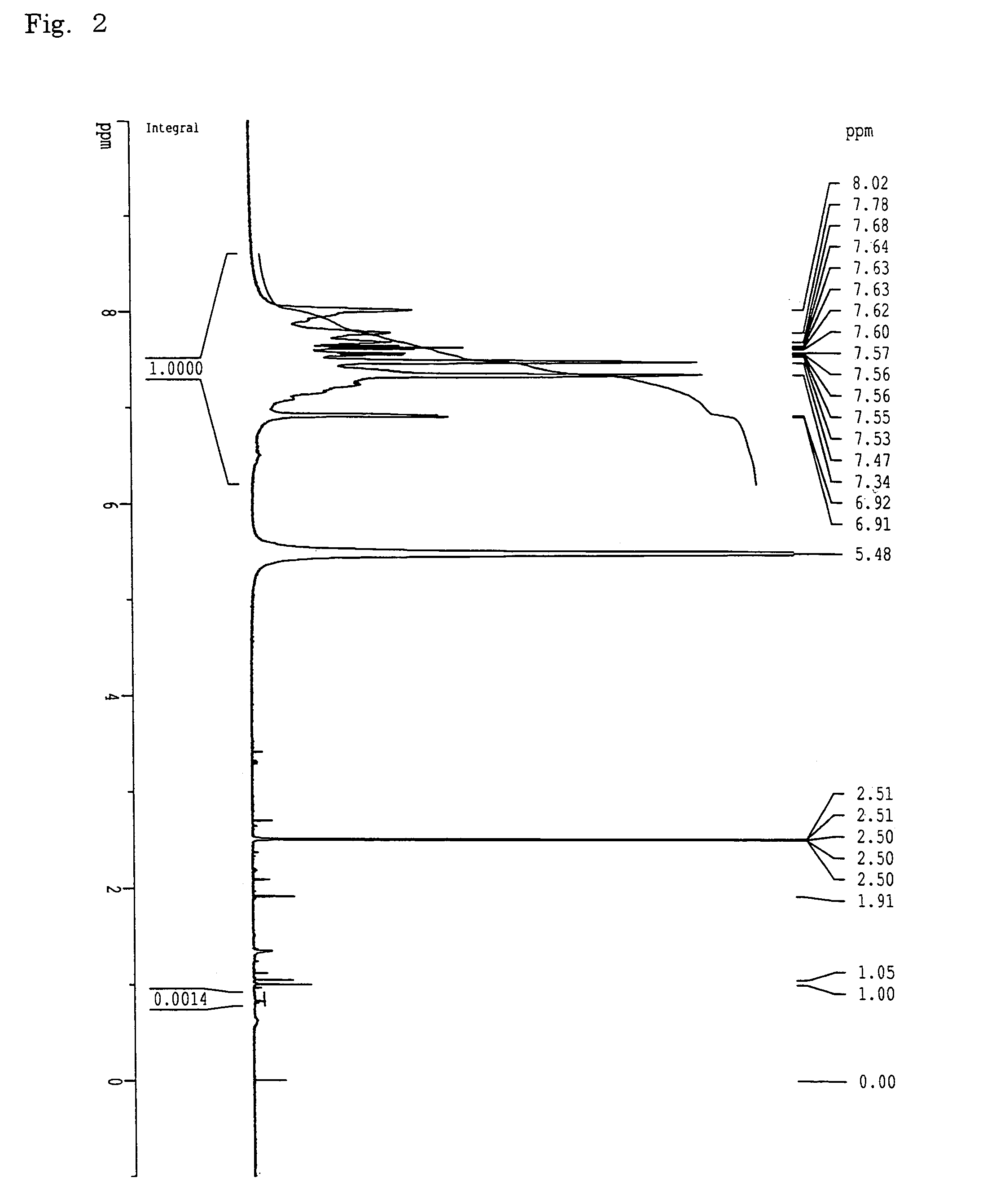Sulfonated polymer having nitrile-containing hydrophobic block and solid polymer electrolyte
a technology of hydrophobic block and polymer, which is applied in the direction of electrochemical generators, non-metal conductors, organic chemistry, etc., can solve the problems of insufficient contact between organic polymers, insufficient proton conductivity of many organic polymers, and many difficulties, so as to achieve excellent hot water resistance, high sulfonic acid concentration, and high proton conductivity and generating performan
- Summary
- Abstract
- Description
- Claims
- Application Information
AI Technical Summary
Benefits of technology
Problems solved by technology
Method used
Image
Examples
example 1
Synthesis of Hydrophobic Units
[0150]A 1-L three-necked flask equipped with a stirrer, a thermometer, a Dean-stark tube, a nitrogen inlet tube and a cooling tube, was charged with 48.8 g (284 mmol) of 2,6-dichlorobenzonitrile, 89.5 g (266 mmol) of 2,2-bis(4-hydroxyphenyl)-1,1,1,3,3,3-hexafluoropropane, and 47.8 g (346 mmol) of potassium carbonate. After the flask had been purged with nitrogen, 346 mL of sulfolane and 173 ml of toluene were added, followed by stirring. The reaction liquid was heated at 150° C. under reflux in an oil bath. Water resulting from the reaction was trapped in the Dean-stark tube. Water almost ceased to occur in 3 hours, and the toluene was removed outside the reaction system through the Dean-stark tube. Subsequently, the reaction temperature was slowly raised to 200° C. and stirring was performed for 3 hours. Thereafter, 9.2 g (53 mmol) of 2,6-dichlorobenzonitrile was added to carry out reaction for 5 hours.
[0151]After the reaction liquid had been cooled na...
example 2
Synthesis of Sulfonated Polymer
[0153]A 1-L three-necked flask equipped with a stirrer, a thermometer and a nitrogen inlet tube was charged with 135.2 g (337 mmol) of neopentyl 3-(2,5-dichlorobenzoyl)benzenesulfonate, 48.7 g (5.1 mmol) of the Mn-9500 hydrophobic units obtained in Example 1, 6.71 g (10.3 mmol) of bis(triphenylphosphine)nickel dichloride, 1.54 g (10.3 mmol) of sodium iodide, 35.9 g (137 mmol) of triphenylphosphine, and 53.7 g (821 mmol) of zinc. After the flask had been purged with dry nitrogen, 430 mL of N,N-dimethylacetamide (DMAc) was added and the mixture was stirred for 3 hours while maintaining the reaction temperature at 80° C. The reaction liquid was diluted with 730 mL of DMAc, and insolubles were filtered.
[0154]The solution obtained was then introduced into a 2-L three-necked flask equipped with a stirrer, a thermometer and a nitrogen inlet tube, and heated to 115° C. with stirring. Subsequently, 44 g (506 mmol) of lithium bromide was added. After the mixture...
example 3
Synthesis of Hydrophobic Units
[0157]Reaction was performed in the same manner as in Example 1, except that the flask was charged with 49.4 g (287 mmol) of 2,6-dichlorobenzonitrile, 88.4 g (263 mmol) of 2,2-bis(4-hydroxyphenyl)-1,1,1,3,3,3-hexafluoropropane and 47.3 g (342 mmol) of potassium carbonate. Thereafter, 12.3 g (72 mmol) of 2,6-dichlorobenzonitrile was added to carry out reaction for 5 hours. The reaction was followed by the same procedure as in Example 1, and 107 g of a desired product resulted. GPC provided a number-average molecular weight (Mn) of 7300.
PUM
| Property | Measurement | Unit |
|---|---|---|
| temperatures | aaaaa | aaaaa |
| temperature | aaaaa | aaaaa |
| temperature | aaaaa | aaaaa |
Abstract
Description
Claims
Application Information
 Login to View More
Login to View More - R&D
- Intellectual Property
- Life Sciences
- Materials
- Tech Scout
- Unparalleled Data Quality
- Higher Quality Content
- 60% Fewer Hallucinations
Browse by: Latest US Patents, China's latest patents, Technical Efficacy Thesaurus, Application Domain, Technology Topic, Popular Technical Reports.
© 2025 PatSnap. All rights reserved.Legal|Privacy policy|Modern Slavery Act Transparency Statement|Sitemap|About US| Contact US: help@patsnap.com



